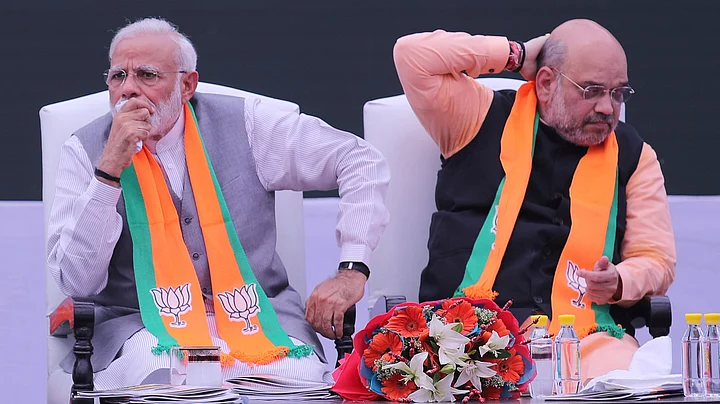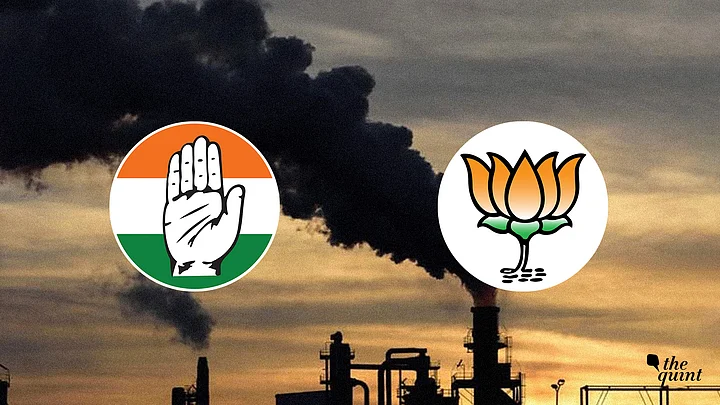If the preliminary figures of voter turnout for the eight seats of the Western region of Uttar Pradesh are any indication, the Bharatiya Janata Party (BJP) has reason to worry.
According to the initial numbers put out by the Election Commission of India, the voting percentage in this region of the electorally-crucial state of Uttar Pradesh was 63.9, marginally lower than the 66 percent recorded in the 2014 Lok Sabha poll. A drop in the turnout suggests that the BJP supporters did not vote with the same fervour this time as they had done in the last general election.
Typical BJP supporters are known to be ardent and conscientious voters and if their enthusiasm is flagging as these numbers appear to suggest, the party leadership will have to necessarily go back to the drawing board to strategise afresh for the remaining phases of voting in Uttar Pradesh.
The BJP had swept this region last time, winning all the eight seats which went to polls on Thursday, with overwhelming margins. An unprecedented Modi wave had then decimated his political opponents who found that their traditional support base had been successfully whisked away by the saffron party. The BJP was also helped by the fact that the Opposition was a divided house.
The BJP’s record vote share of nearly 49 percent in the eight constituencies – Meerut, Baghpat, Ghaziabad, Bijnor, Kairana, Gautam Buddh Nagar, Saharanpur, and Muzaffarnagar – had set the tone for the election in the remaining regions of Uttar Pradesh which also voted overwhelmingly in its favour. The BJP went on to win 71 of the 80 Lok Sabha seats in Uttar Pradesh and followed it up with an equally outstanding performance in the 2017 Assembly polls.
It has become imperative for the BJP to retain its lead over its rivals in Uttar Pradesh as it was the party’s massive victory here which had propelled it to power at the Centre in 2014.
Post 2014, UP’s Landscape Saw Sea-Change
But the electoral landscape has undergone a sea-change since the BJP last tasted victory in this Hindi heartland state. For starters, long-time rivals, the Mayawati-led Bahujan Samaj Party and the Samajwadi Party now headed by Akhilesh Singh Yadav, have decided to put aside their past differences and work together to take on the BJP.
The two have roped in the father-son duo of Ajit Singh and Jayant Choudhary of the Rashtriya Lok Dal as their party has a presence in the Jat land of Western Uttar Pradesh. Having realised that their combined vote share can pose a serious threat to the BJP, the threesome worked on forging an alliance or a mahagathbandhan of Dalits, Muslims and Jats in this region.
And from all accounts, reports from the ground indicate that the Dalits and Muslims, having a substantial presence in this region, have allied with each other as both are feeling the heat from the Yogi Adityanath state government. The Dalits, who had deserted their icon Mayawati last time in favour of the BJP, have returned to the BSP fold following a series of clashes with the dominant Rajput community over the last two years. The minorities, who have been ardent supporters of the Samajwadi Party have always voted for parties and candidates which are best placed to defeat the BJP.
The only glitch here is the Congress, which has fielded its own candidates after it was kept out of the BSP-SP-RLD mahagathbandhan. There are fears that the Congress party’s Imran Masood in Saharanpur and Naseemuddin Siddiqui in Bijnor, could end up helping the BJP as both candidates are considered strong contenders and have the potential of dividing the minority vote.
The Jat Powerplay
But it is the powerful Jat community which could prove to be the X-factor in this election. Though the Jats have traditionally voted for the RLD, the community shifted loyalties to the BJP in the last Lok Sabha election following the communal violence witnessed in Muzaffarnagar in 2013. The traditional Jat-Muslim alliance was shattered by the sharp Hindu-Muslim divide as religious polarisation triumphed over caste loyalties. But, this time, the Jats are wavering in their support to the BJP. The stray cattle menace, which is destroying their crops, the mounting arrears of sugar cane crops combined with their old allegiance to Charan Singh’s RLD has resulted in a visible divide in this community. A substantial shift of Jat votes to the mahagathbandhan could spell serious trouble for the BJP.
On its part, the BJP’s plans have been clearly centered around Prime Minister Narendra Modi’s persona and its nationalist agenda. The Pulwama terror attack followed by India’s retaliatory air strike against Pakistan and Modi’s projection as a strong decisive leadership have been the chief talking points of the BJP’s campaign. But 2019 is not 2014. The prime minister’s popularity ratings are undoubtedly still on the high side but there is no visible Modi wave this time. The mahabathbandhan is making its presence felt on the ground, adding to the uncertainty to this election. The final score-card, however, will only be out when the election results are declared on 23 May.
(The writer is a senior Delhi-based journalist who can be reached at @anitaakat. This is an opinion piece and the views expressed are the author's own. The Quint neither endorses, nor is responsible for them.)
(At The Quint, we question everything. Play an active role in shaping our journalism by becoming a member today.)


